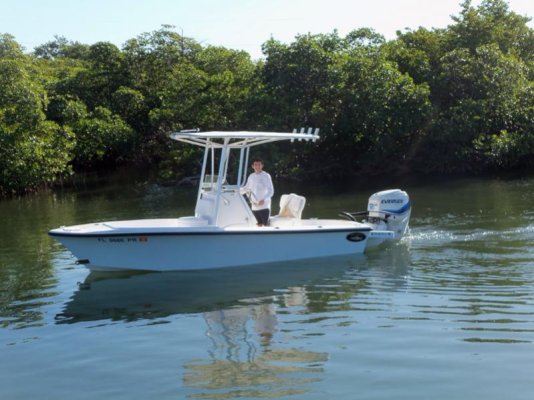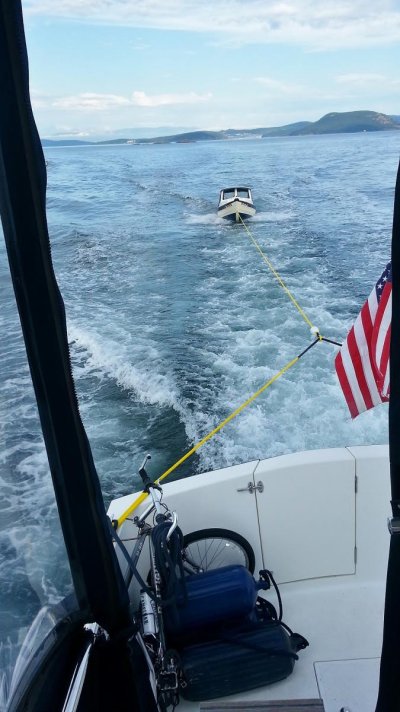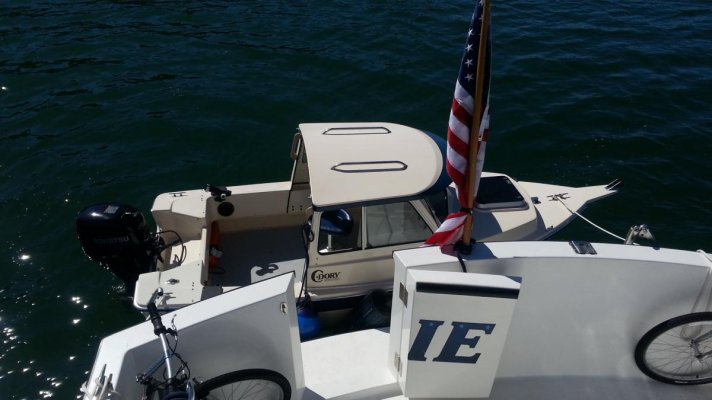IMHO - After having towed plenty of outboard boats, inland waterways and on coastal journeys: It is best to have o/b motor centered, raised high as possible, and locked firmly in the raised position.
Some narrow beamed boats like smaller Whalers or Carolina skiffs and similar boats roll over very easy with the motor tilted up and stay turtle...they are then very hard to flip back over.
Boat towed automatically follows in direct path with towing boat.
Not all boats, especially at slow speeds (when they are bow heavy or many just when the bow fall from the rise caused by speed).
Secret is how long the tow line is. Depending on wake the towing boat throws, speed of tow, and towed boat’s hull shape/size determines best length for tow line. Experiment, you will find best tow line length.
Note: Towing a runabout at speed is fine and easy in good weather conditions. In mildly bad conditions it can start to become a hassle. In real bad conditions it is a BIG PIA and you may actually lose your tow for one of several reasons. In following seas of any extent beyond mild you can quickly get into trouble - again for one of several reasons. I know! Been there, done that!!








